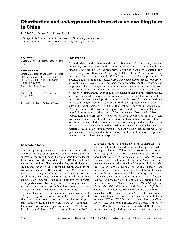摘要
To understand the distribution and relative abundance of cave-dwelling bats and to identify those sites that would be important for conservation of bat species, 25 underground sites that had not been previously surveyed were investigated in this 3-year study (from December 2003 to April 2006) in Funiu Mountain of Henan province, China. Approximately 80 000 bats were recorded, representing 12 species. The most abundant species were Rhinolophus affinis, Miniopterus schreibersi and Hipposideros pratti. The roosts were evaluated for their conservation importance. The most important sites in the area are Yunhua and Nanzhao caves, which serve as hibernaculums and nursery roosts to c. 13 740 and 11 803 bats, respectively, representing seven species. By means of cluster and correspondence analysis, the distribution of bat species was different between the two sides of the mountain and was highly dependent on the size of the cave. The underground sites in the south region hosted c. 80% of the total bats, representing 11 species. The sites in the north region hosted 20% of the total bats, representing seven species. Presently, none of the caves in the region has adequate protection and some bat populations are under serious threat. Many large caves that contained large bat populations and several species of concern had been developed as tourist sites, and so some advice on protecting the most important local habitats was sought based on the assessment of the conservation status of underground sites. This paper presents basic data concerning the distribution of cave-dwelling bats and the patterns of cave use on Funiu Mountain. The data will help local governments and policy-makers develop suitable strategies to promote local tourisms while protecting important habitats of animal species.
